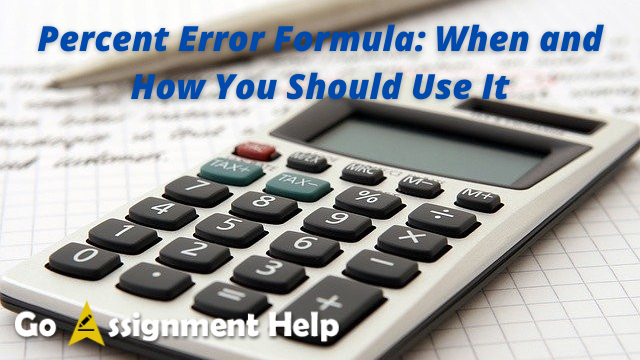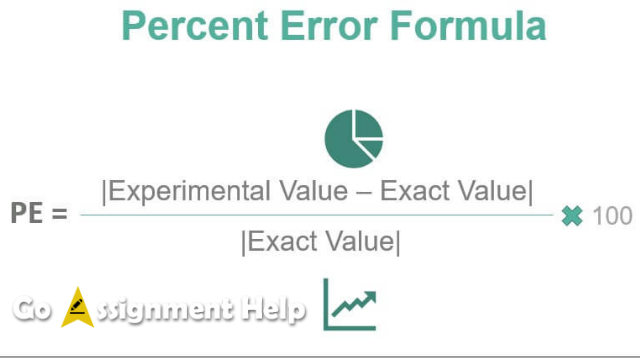Percent Error Formula: When and How You Should Use It
Mar 14,22
Have you ever wondered how to calculate percent error? You’re not alone! Our readers often ask us how to calculate the percent error of an experiment.
To calculate this value, it’s important to be able to understand what exactly is meant by “percent error.” So let’s look at that first.
Percent Error Definition: The definition of percent error is the difference between an experimental value and a theoretical value, divided by the theoretical value and multiplied by 100.
In other words, percent error is a measure of how close your experimental results are to the expected results. This number tells you how far off your experiment was from predicting the “true” answer.

Percent Error Formula:
Percent Error = (Experimental Value – Theoretical Value) / Theoretical Value * 100%
Experimental Value can also be referred to as Actual Value Observed.
Theoretical Value can also be referred to as Expected Value.
Now that we know what percent error is, let’s look at how to calculate it. This formula is for calculating the percent error of a single experimental value. If you have more than one experimental value, you can use this formula to calculate the average percent error.
Percent Error Formula for More than One Experimental Value:
Percent Error = (Experimental Value 1 – Theoretical Value 1) / Theoretical Value 1 * 100% + (Experimental Value 2 – Theoretical Value 2) / Theoretical Value 2 * 100%
…
So let’s say that you are performing an experiment in which you are heating water to see how much its temperature increases when placed on a stove. You measure the initial temperature of the water, which is 15°C. Then, every five seconds, you take another measurement until you reach 35°C, at which point it is boiling.
Here’s what your data looks like:
When you plug your data into the formula, it looks like this:
Percent Error = ((35 – 35) / 35) * 100% = 0
Now that’s good news! It means that your experimental values are very close to the theoretical values.
In another experiment, let’s say that you’re trying to determine how the number of marbles you put into a jar affects the volume of that jar. You fill the first jar with 50 marbles, but when you try to fill the second jar with 100 marbles, it overflows.
When you plug your data into the formula, it looks like this:
Percent Error = (250 – 200) / 200) * 100% = 25%
This means that your experimental value (100 marbles) was 25% higher than the theoretical value (200 marbles). This percent error tells you how far off your results were from the expected results.
In general, you should use percent error to determine how closely your experimental values match the expected values.
In the above example, there was a 5°C difference between your experimental and expected results. For the water experiment, this is a very small percent error compared to what might be found in other experiments. This indicates that you did a good job at heating the water in a consistent manner, and could expect accurate results if you were to repeat this experiment on a larger scale.
In the above example, there was a 25% difference between your experimental and expected volume results. In this case, your experiment is not very effective at predicting the volume of mixtures with different numbers of marbles in them. This may be due to factors such as air bubbles getting caught among the marbles or inconsistent amounts of water being added to the jar.
In general, if your percent error is small (less than 10%, for example) then you can feel confident that your experiment is giving accurate values and you can trust those results. If your percent error is large (10-30%, for example), then there may be something wrong with your experimental procedure and you should investigate what the source of the error may be.
Percent Error is a valuable tool for determining how closely your experimental values match the expected values. When used correctly, it can help you to improve your experiments and get more accurate results!
How does GoAssignmentHelp write you perfect research papers and lab reports?
We offer a few services to help you get started. First, we provide a list of some science lab reports and research paper examples. We also suggest some common mistakes that students make when writing their research papers, and how to avoid them. Finally, we have a list of the best places online where students can read peer-reviewed articles on almost any topic.
If you’re looking for a more individualized approach, our team of experts can help you write your research paper from scratch, or help you revise and improve an existing paper. Just contact us to get started!





0 responses on "Percent Error Formula: When and How You Should Use It"